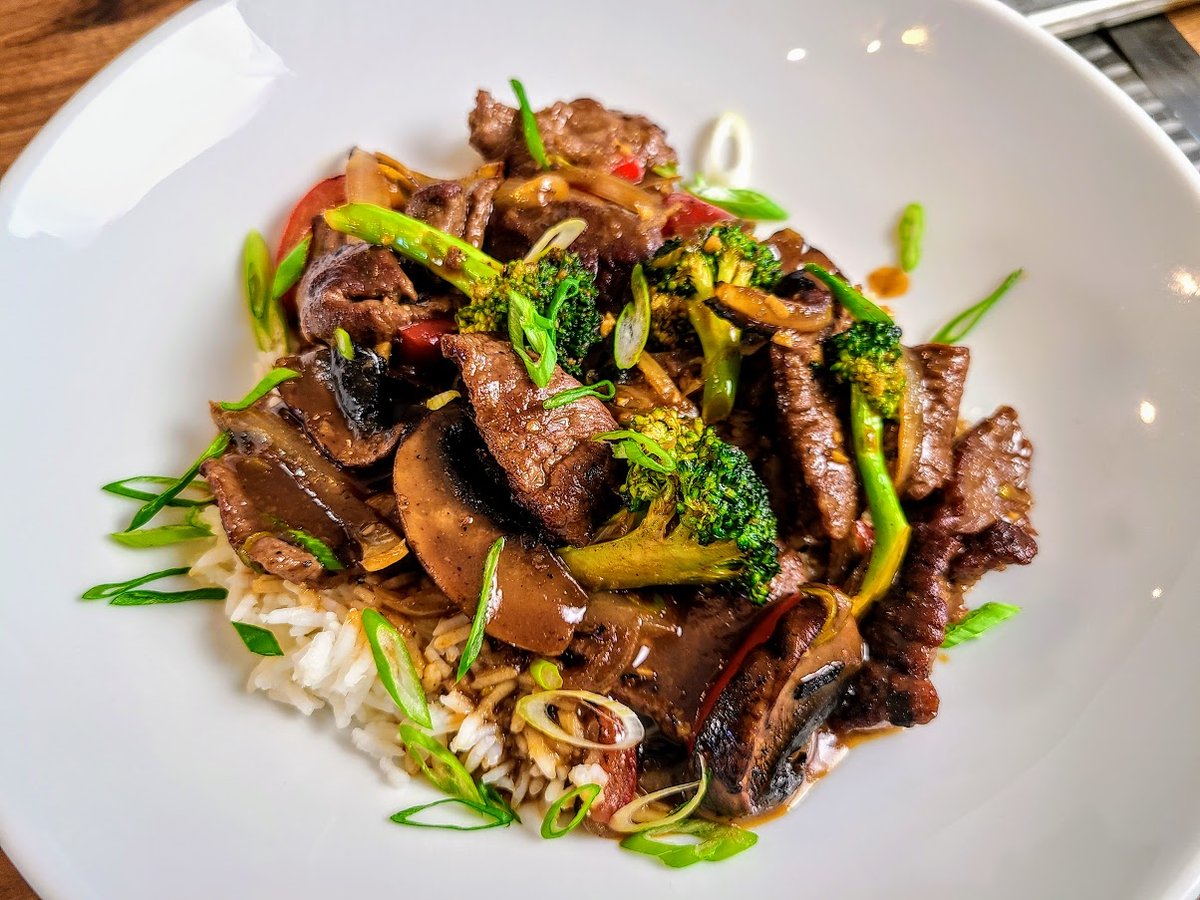
One of my very favorite classes to teach at The Chopping Block is our Flavor Dynamics class. In this class, we explore taste versus flavor. It is an in-depth look of all the five basic tastes: salty, sweet, sour, bitter and umami and how they work with one another to create a balanced and complex dish. We discuss how each taste can either amplify the other or tone it down. To me, being able to taste a dish and understand what each ingredient brings to the table and correct any issues is a very important skill for the home cook to learn, but it does take some time to hone that skill. This class is definitely the first step to understanding! You can see below some of the visual aides I like to use during the Flavor Dynamics class.
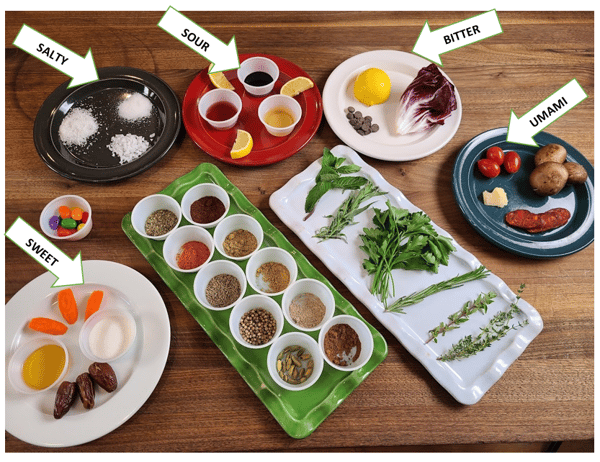 The taste that I want to focus on in this blog is umami because I feel like not everyone knows what that is. The Japanese translation of the word umami is “savory” or “delicious.” Umami occurs naturally in a wide range of foods that contain free glutamate, one of 20 amino acids that make up the proteins in meat, fish, and beans. Free glutamate is formed in foods when glutamic acid, an amino acid naturally found in protein, is broken down. It increases salivation and accentuates the savory, salty, and sweet nature of food. Glutamate also serves as a flavor enhancer in the form of the man-made additive known as monosodium glutamate, a.k.a. MSG.
The taste that I want to focus on in this blog is umami because I feel like not everyone knows what that is. The Japanese translation of the word umami is “savory” or “delicious.” Umami occurs naturally in a wide range of foods that contain free glutamate, one of 20 amino acids that make up the proteins in meat, fish, and beans. Free glutamate is formed in foods when glutamic acid, an amino acid naturally found in protein, is broken down. It increases salivation and accentuates the savory, salty, and sweet nature of food. Glutamate also serves as a flavor enhancer in the form of the man-made additive known as monosodium glutamate, a.k.a. MSG.
Monosodium glutamate is derived from the sodium salt of glutamate, an amino acid found in protein-rich foods. Some foods that naturally contain a high amount of free glutamate would be tomatoes, mushrooms and blue cheese. Condiments like soy sauce, fish sauce and liquid aminos are also a great source of umami. Sometimes umami can easily be confused for the salty category because salt naturally enhances your food, but it does not have the same earthy and meaty qualities that umami is known for.
I get asked all the time how to season properly and a great way to add the salt-like taste without physically using salt is to turn to umami-based flavor profiles. Liquid aminos have been around for quite a while now, in the beginning, they were only found in health and nutrition stores, but they are now becoming more widely available in grocery stores as well. Amino acids are the building blocks of protein that your body uses to create muscle. They’re also important for healthy functioning of your body’s cells and organs. The major sources of essential amino acids include meat, dairy products and legumes. Liquid aminos contain natural glutamate due to the breakdown of proteins in soybeans or coconut sap, so they stimulate an umami flavor sensation and make food taste more enjoyable.
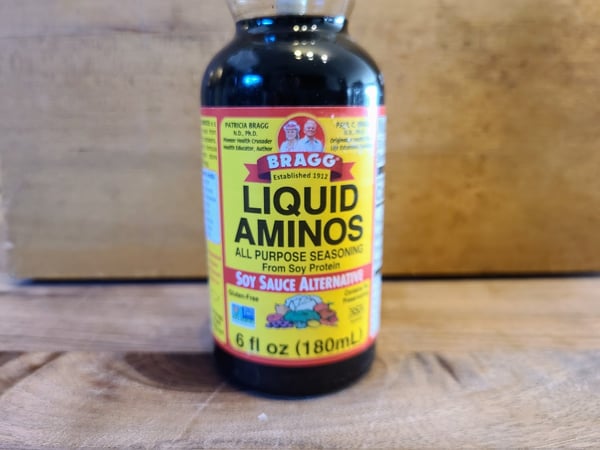 Don’t let the name liquid aminos fool you though. Although they have aminos in the name, they are not the same. In fact, liquid aminos (such as Bragg) are a liquid protein concentrate made from soybeans and very similar to soy sauce. Liquid aminos are much saltier than coconut aminos and contain soy so they are not a recommended soy sauce alternative. Liquid aminos are culinary seasonings that look and taste similar to soy sauce. Coconut aminos is a salty, savory seasoning sauce made from the fermented sap of coconut palm and sea salt. The sugary liquid is used to produce a variety of food products. It’s not as rich as traditional soy sauce and has a milder, sweeter flavor. Yet, surprisingly, it doesn’t taste like coconut.
Don’t let the name liquid aminos fool you though. Although they have aminos in the name, they are not the same. In fact, liquid aminos (such as Bragg) are a liquid protein concentrate made from soybeans and very similar to soy sauce. Liquid aminos are much saltier than coconut aminos and contain soy so they are not a recommended soy sauce alternative. Liquid aminos are culinary seasonings that look and taste similar to soy sauce. Coconut aminos is a salty, savory seasoning sauce made from the fermented sap of coconut palm and sea salt. The sugary liquid is used to produce a variety of food products. It’s not as rich as traditional soy sauce and has a milder, sweeter flavor. Yet, surprisingly, it doesn’t taste like coconut.
Liquid aminos contain essential and non-essential amino acids, both of which play many critical roles in your body. Liquid aminos do not contain wheat, making them popular soy sauce substitutes for those following a gluten-free diet. Commercially prepared soy sauces often contain sodium benzoate. Sodium benzoate is a preservative that’s added to foods to increase their shelf life and prevent the growth of bacteria and fungi. Liquid aminos do not contain any chemical preservatives. Another major health factor is that both liquid and coconut aminos are MSG-free.
Liquid aminos are very easy to add to your culinary adventures. As stated, the most common use for liquid aminos is to use as a substitute for soy sauce, but why stop there? Anywhere you can imagine wanting a slightly salty or hint of umami, try liquid aminos or coconut aminos.
Here is a list of my top 5 ways to use liquid aminos:
1. Stir into ramen or other soups for complexity.
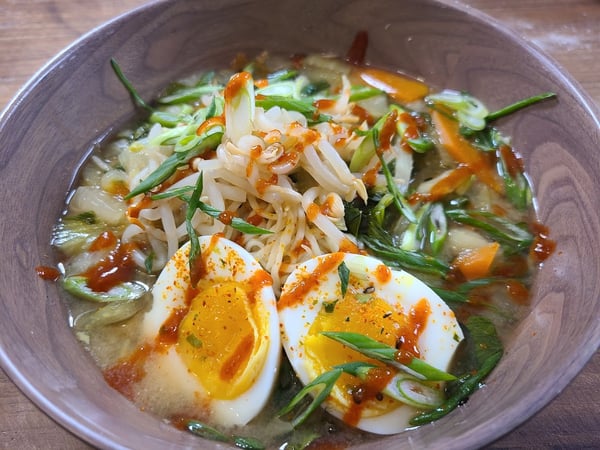 2. Use in salad dressings instead of Worcestershire, like this Caesar salad.
2. Use in salad dressings instead of Worcestershire, like this Caesar salad.
 3. As a glaze or a marinade for meat.
3. As a glaze or a marinade for meat.
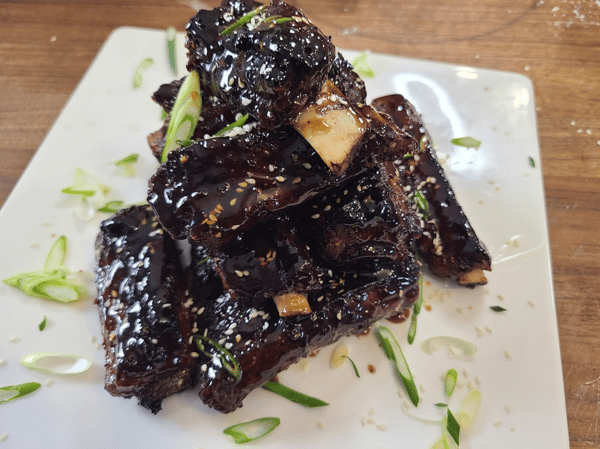 4. Use it as a dipping sauce for sushi or dumplings.
4. Use it as a dipping sauce for sushi or dumplings.
 5. Mix into stir-fries or fried rice.
5. Mix into stir-fries or fried rice.
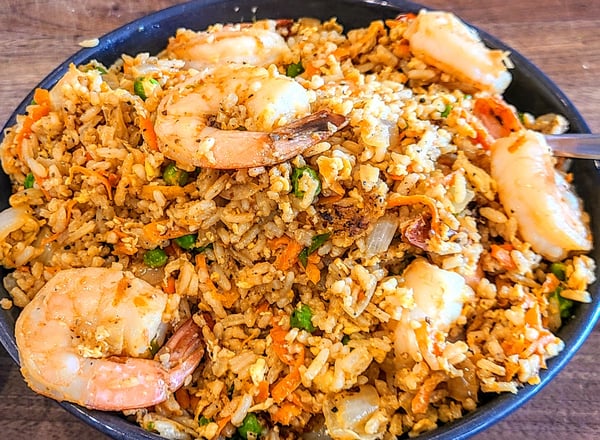 Liquid aminos store well in a cool, dark pantry for three to six months after opening. Bragg Liquid Aminos has a three-year shelf life, and you do not need to refrigerate the product, even after opening. However, keeping it out of direct sunlight in a cool location can extend its lifespan. I would have to say that my favorite way of using liquid aminos is in stir-fry dishes so please enjoy this recipe, and see for yourself how great this condiment really is.
Liquid aminos store well in a cool, dark pantry for three to six months after opening. Bragg Liquid Aminos has a three-year shelf life, and you do not need to refrigerate the product, even after opening. However, keeping it out of direct sunlight in a cool location can extend its lifespan. I would have to say that my favorite way of using liquid aminos is in stir-fry dishes so please enjoy this recipe, and see for yourself how great this condiment really is.
Beef and Veggie Stir Fry
Scroll down for a printable version of this recipe
Yield: 4-6 servings
Prep time: 20 minutes
Cook time: 15 minutes
1 pound steak, thinly sliced
1 tablespoon cornstarch
Salt and pepper to taste
1 tablespoon sesame oil
1 tablespoon grapeseed oil
3 cups vegetables of your choice such as broccoli florets, sliced mushrooms or pepper strips
1/2 cup chicken or vegetable stock
1/4 cup Liquid Aminos
1 tablespoon hoisin sauce
1 tablespoon cornstarch
2 cloves garlic, minced
1 teaspoon ginger, freshly grated
2 scallions, thinly sliced on the bias
Steamed jasmine rice
1 tablespoon sesame seeds (optional)
- Place the sliced steak in a bowl, toss with the cornstarch and season with salt and pepper to taste. Set aside.
- Heat a large sauté pan or wok over medium-high heat and add the sesame oil and grapeseed oil.
- Stir fry the beef, stirring occasionally, until lightly caramelized around the edges. Transfer the beef to a plate and set aside.
- Reduce the heat to medium and add a touch more oil to the pan if it’s dry. Sauté the vegetables of your choice until crisp yet tender. Tip: Add a splash of water if the bottom of the pan is getting too dark. This will also create some steam that will help cook the vegetables.
- While the vegetables are cooking, whisk together the stock, liquid aminos, hoisin sauce and 1 tablespoon of cornstarch. Set aside.
- Add the garlic, ginger and scallions, and cook for an additional 30 seconds to 1 minute or until aromatic.
- Pour the sauce into the pan and add the beef, stirring well. Cook on medium heat until the sauce has thickened, about 2 minutes.
- Spoon the stir fry over steamed rice, and top with sesame seeds.
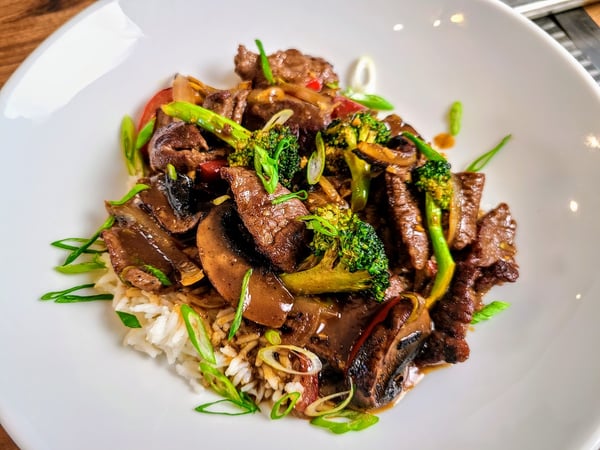 If you want to learn more about balancing flavors and how to use umami and salt in your cooking, our next virtual Flavor Dynamics class is on March 27 at 11am CST. We do offer this class once a month, so if you can’t make it in March, check out our April offering. This really is the foundation of cooking in my opinion, and in every one of our cooking classes whether in-person or virtual, we will touch on this subject to some extent.
If you want to learn more about balancing flavors and how to use umami and salt in your cooking, our next virtual Flavor Dynamics class is on March 27 at 11am CST. We do offer this class once a month, so if you can’t make it in March, check out our April offering. This really is the foundation of cooking in my opinion, and in every one of our cooking classes whether in-person or virtual, we will touch on this subject to some extent.
If you want more ways to use liquid aminos, join us for our virtual Kung Pao Cauliflower class on Thursday, March 18 at 6pm CST and our virtual Ramen Workshop on Saturday, April 10 at 2pm CST. I hope to see you virtually or in person soon!
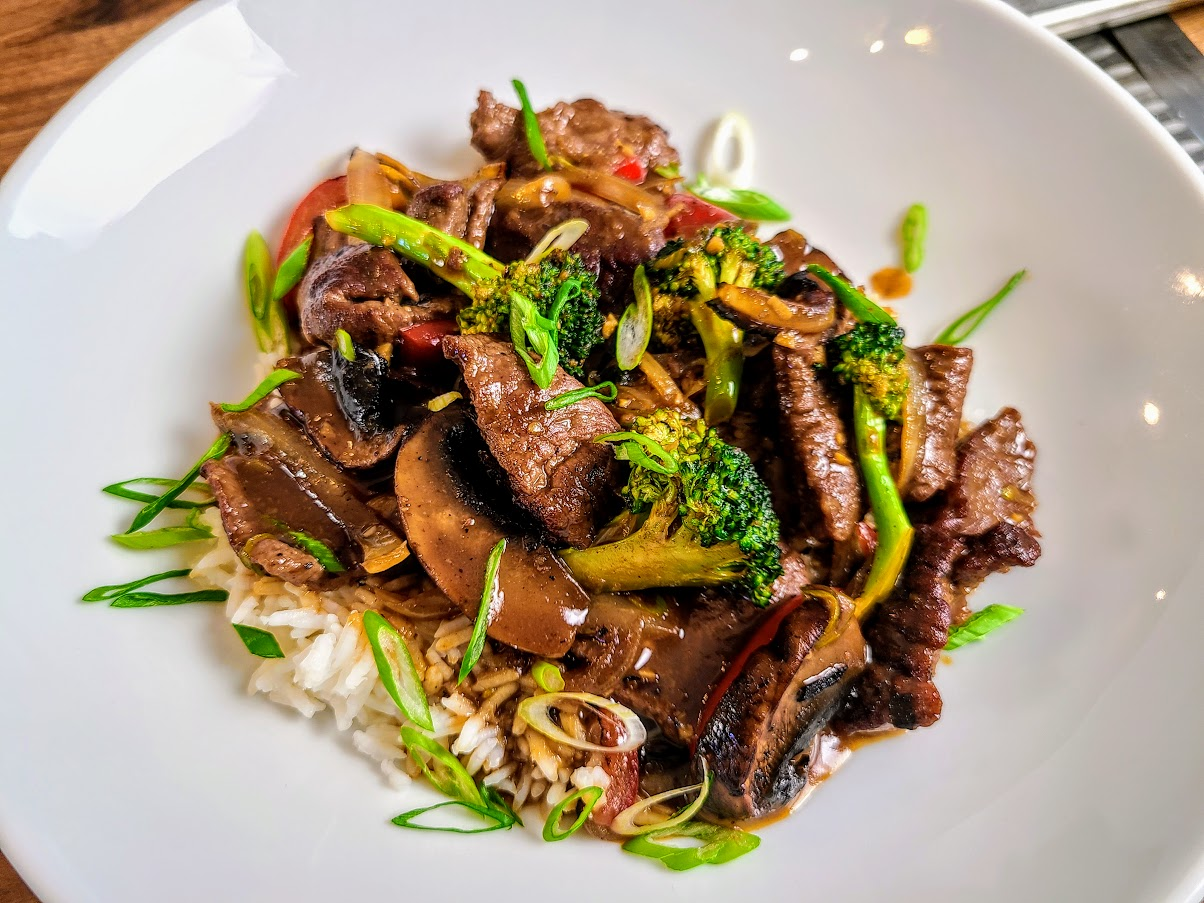
Beef and Veggie Stir Fry
Ingredients
- 1 pound steak, thinly sliced (see note, below)
- 1 tablespoon cornstarch
- Salt and pepper to taste
- 1 tablespoon sesame oil
- 1 tablespoon grapeseed oil
- 3 cups vegetables of your choice such as broccoli florets, sliced mushrooms or pepper strips
- 1/2 cup chicken or vegetable stock
- 1/4 cup Liquid Aminos
- 1 tablespoon hoisin sauce
- 1 tablespoon cornstarch
- 2 cloves garlic, minced
- 1 teaspoon ginger, freshly grated
- 2 scallions, thinly sliced on the bias
- Steamed jasmine rice (see note, below)
- 1 tablespoon sesame seeds (optional)
Instructions
- Place the sliced steak in a bowl, toss with the cornstarch and season with salt and pepper to taste. Set aside.
- Heat a large sauté pan or wok over medium-high heat and add the sesame oil and grapeseed oil.
- Stir fry the beef, stirring occasionally, until lightly caramelized around the edges. Transfer the beef to a plate and set aside.
- Reduce the heat to medium and add a touch more oil to the pan if it’s dry. Sauté the vegetables of your choice until crisp yet tender. Tip: Add a splash of water if the bottom of the pan is getting too dark. This will also create some steam that will help cook the vegetables.
- While the vegetables are cooking, whisk together the stock, liquid aminos, hoisin sauce and 1 tablespoon of cornstarch. Set aside.
- Add the garlic, ginger and scallions, and cook for an additional 30 seconds to 1 minute or until aromatic.
- Pour the sauce into the pan and add the beef, stirring well. Cook on medium heat until the sauce has thickened, about 2 minutes.
- Spoon the stir fry over steamed rice, and top with sesame seeds.


